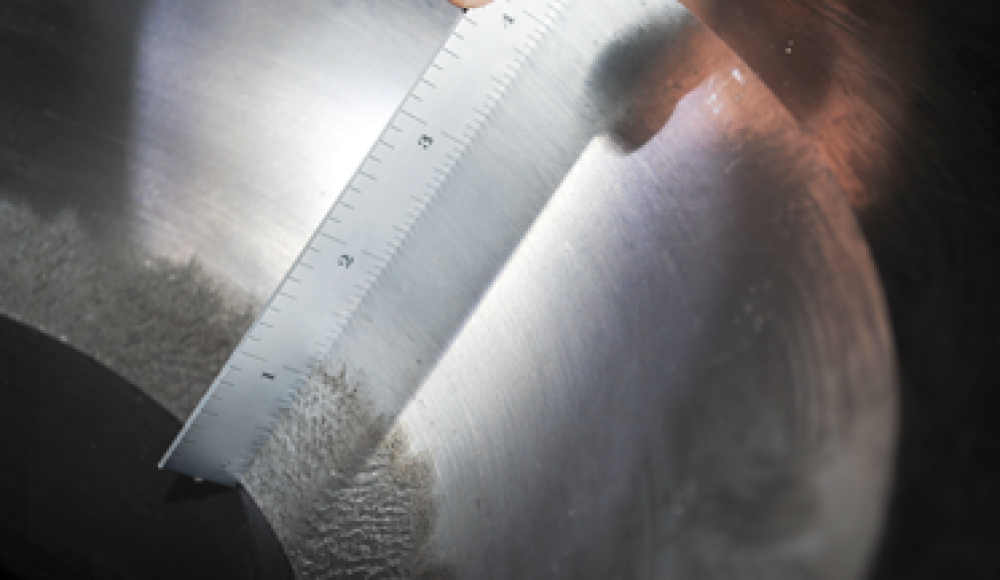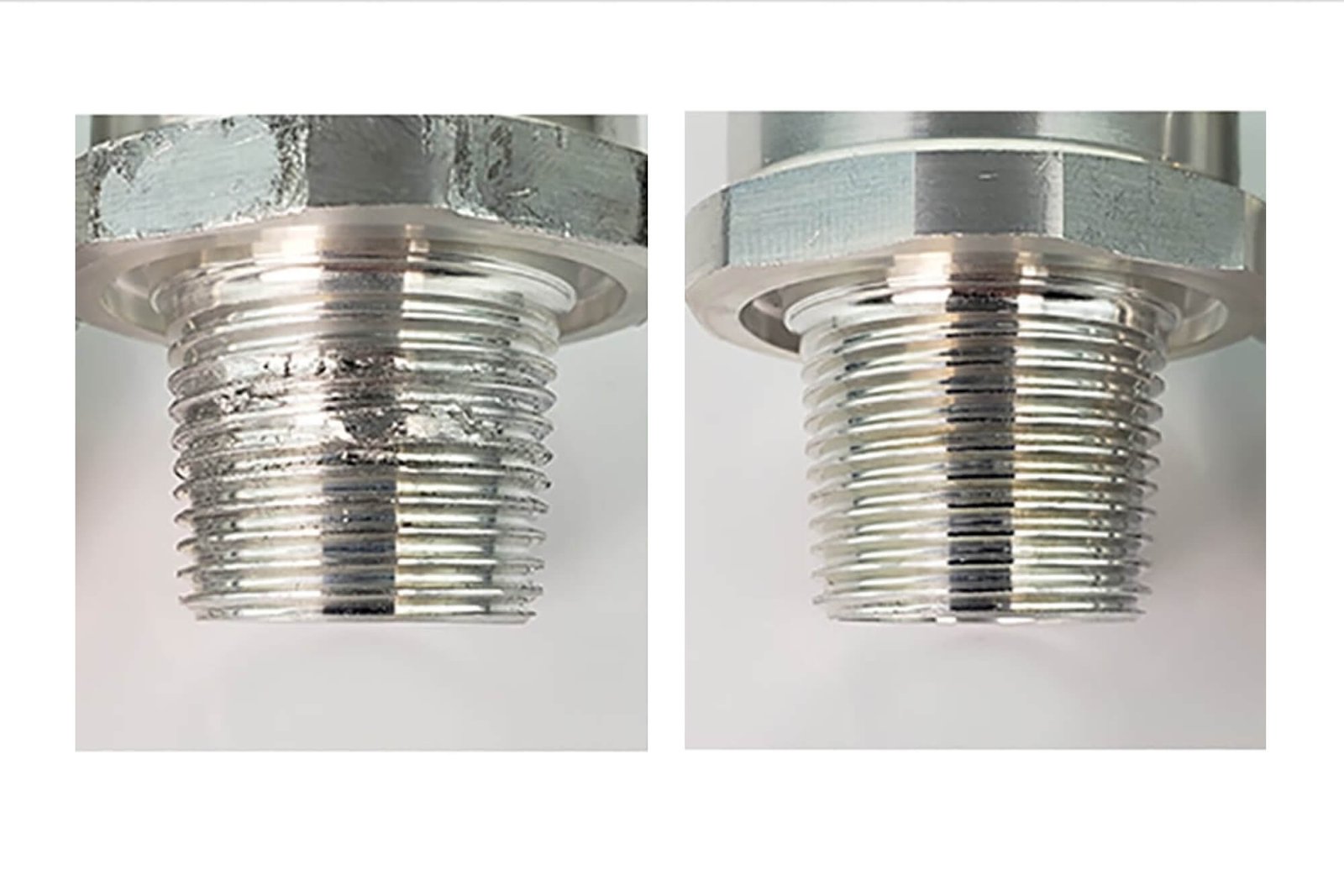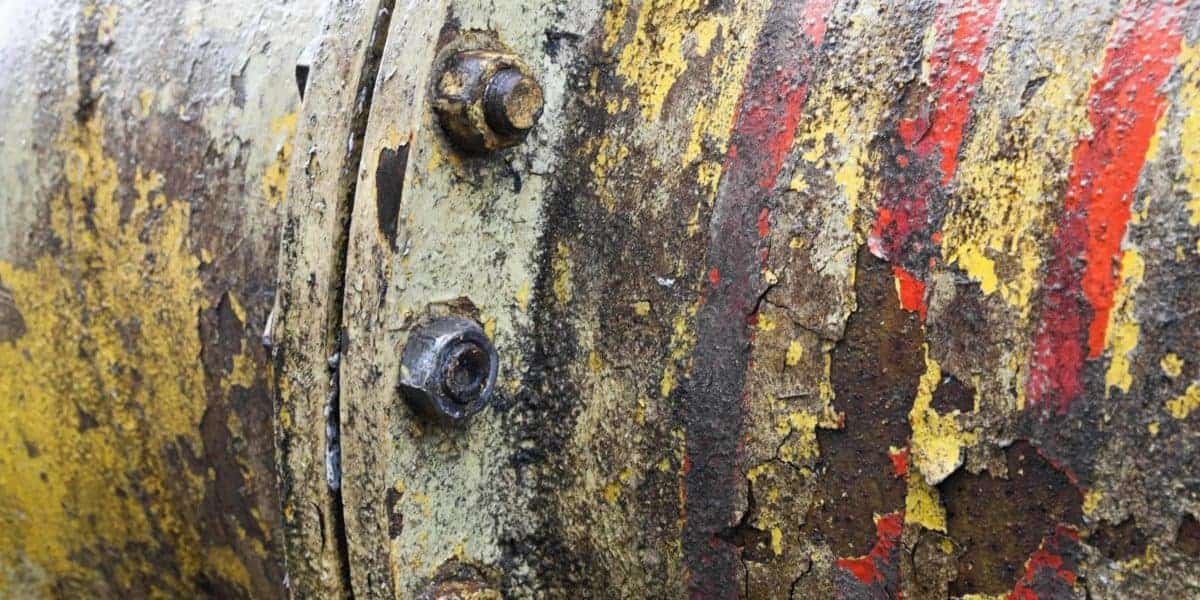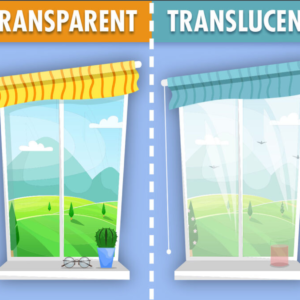ガーリングは、エンジニアにとって重要な課題です, メーカー, メンテナンス技術者も同様です. この形式の摩耗は、機械のダウンタイムを引き起こす可能性があります, メンテナンスの頭痛, そして、最終的には適切に管理されていなければ、かなりのコストがかかります. しかし、正確にはガレーとは何ですか, それはどのように発生しますか, そして、どうすればそれを防ぐことができますか? このガイドは、あなたが知る必要があるすべてをカバーしています.
導入
ガーリングは、2つの金属表面の間に発生する粘着摩耗の形式です。, それらを融合させ、潜在的に押収します. 研磨剤や疲労摩耗とは異なります, ガレーは迅速に現れ、すぐに機器の故障につながる可能性があります. ガレーを理解することは、コストのかかる機器の損傷をもたらすため、ガーリングを理解することが重要です, ダウンタイム, および生産性の損失.
メタル・ガーリングとは何ですか?
金属のガーリングは、スライド接触中の分子接着のために自然に結合する2つの金属表面を含みます. この現象, 多くの場合、コールド溶接と呼ばれます, 重大な摩擦損傷をもたらします.
一般的なアプリケーションとシナリオ:
金属形成プロセス: パンチング, スタンピング, および描画操作.
油圧シリンダー: 近くにシールとシャフト, スライドコンタクト.
ベアリングとブッシング: 連続運動を伴うスライドサーフェス.
エンジンピストン: エンジンの高負荷スライド接点.
ねじ付きコンポーネント: ボルトとナッツ, 特にステンレス鋼アセンブリで.
ガレーする傾向がある材料:
アルミニウム: その柔らかさと延性のため.
オーステナイト系ステンレス鋼: 受動的な酸化物層の脆弱性のために感受性.
チタン: 酸化物層が侵害されると、高い化学反応性.
ガーリングに耐性のある材料:
真鍮と青銅: 自然な胆汁抵抗のためにベアリングとブッシングのために選ばれることが多い.
金属特性の影響:
可塑性と延性がより高い金属は、より容易になります.
より硬い金属は、圧力下で簡単に変形しないため、胆嚢に抵抗します.
酸化物層と胆嚢:
ステンレス鋼やアルミニウムのような金属は、耐食性を提供する保護酸化物層を形成します. これらの層が圧力下で侵害されている場合, ガレーの可能性が高くなります, 押収されたスレッドと破損したコンポーネントにつながります.
機械加工のガレー:
機械加工操作 (旋回, フライス加工, パンチング), ガレーは、金属のツールへの転送につながる可能性があります, しこりになります. このしこりは精度に影響します, 表面仕上げ, およびツールの寿命, 多くの場合、経験豊富な機械工によって認識される顕著な振動や独特の音を引き起こす.
ガレーはどのように機能しますか?
顕微鏡レベル, 一見滑らかな金属表面には、小さな欠陥または吸気が含まれています. スライドが圧力下で発生したとき, これらのアスペリティは互いにこすります, 摩擦と熱を生成します.
フォーメーションプロセス:
局所的な応力: 摩擦は熱とストレスを生み出します, 保護酸化物層を損傷します.
コールド溶接: 電子交換と高局所的な応力は、表面を融合します.
材料転送: 一方の表面からもう一方の表面への材料, 胆嚢として知られる目に見える塊を作成します.
急速な進行:
ガレーはしばしば急速に現れます, 研磨剤や疲労摩耗とは異なります. 一度開始されます, 塊が形成されたため、摩擦が増加するため、胆嚢は加速します, 問題をさらに悪化させます.
ガーリングを引き起こす要因
いくつかの条件は、胆嚢の可能性を大幅に増加させます:
露出した表面:
切れた金属表面は酸化物の保護を欠いています, 押し付けたりこすったりすると、胆嚢に非常に影響を受けやすくします.
破片の存在:
滑り面の間に閉じ込められた粒子は研磨性になります, 局所的なストレスの増加と胆嚢の促進.
高い機械的応力:
高負荷と高速スライド速度は、摩擦熱と変形の増加により、胆嚢の可能性を高めます.
同様の金属相互作用:
同様の特性を持つ金属は、特に電子伝達と接着結合が発生しやすいです, 胆嚢のリスクを強化します.
胆嚢を防ぐ方法?
胆嚢が深刻な頭痛のように聞こえる場合 (それは間違いなくです), 良いニュースは、それを避けるための簡単な方法があることです. これは、あなたの金属の表面が立ち往生したり破損したりせずにスムーズにスライドし続けるようにするためにできる実用的なことの内訳です:
潤滑で滑らかにしてください
潤滑剤またはコーティングを追加することはあなたの最初の防衛線です. これらを、金属表面が一緒に固執するのを止める保護層と考えてください. 潤滑剤防止潤滑剤を使用します, アンチシイズ製品, または特別なグリース, 特にステンレス鋼のボルトまたはスライド部品を使用します.
プレッシャーとスピードを緩和します
高圧, 高速スライド, 熱を高めます. 物事を遅くし、可能な限りプレッシャーを軽減します. ストレスが少ないということは、表面が固執して融合する可能性が低いことを意味します.
適切な材料を選択してください
金属を賢く混ぜて一致させます. Gallingは似たような金属が大好きです, だから、互いに簡単に接着しない合金を選ぶ. 真鍮, ブロンズ, コバルト合金, そして、硬化した鋼は、彼らが胆嚢に対してより厳しいので素晴らしい選択です.
表面を清潔で滑らかに保ちます
ダート, ほこり, 表面に貼り付けられた金属チップは摩擦を増やし、胆嚢につながる可能性があります. 金属部品を清潔に保ち、破片がないようにしてください. 表面の損傷を避けるために、それらを適切に処理して保存します.
圧力を広げます
金属表面が小さなもので一緒に押している場合, 濃縮エリア, ガレーはすぐに起こります. 接触領域を増やしてみてください - これは力を広げてストレスを軽減します, 部品を胆嚢から保護します.
あなたの表面仕上げをちょうど正しくしてください
金属の表面は、粗すぎたり滑らかすぎたりしてはいけません. バランスの取れた表面仕上げを目指します (間 0.25 µmと 1.5 μm). 滑らかすぎるか粗すぎると、両方ともトラブルを引き起こす可能性があります.
現代の技術を利用してください
高度な材料とコーティング, ナノテクノロジーベースの合金または銅および酸化カルシウム粒子を含むコーティングのように, 胆嚢に対する抵抗を真剣に高めることができます. これらの最新のソリューションは、あなたの機器に追加の保護と長寿を与えます.
これらの実装の手順に従うことにより, ギャリングのリスクを大幅に減らすことができます。これは時間を節約できます, お金, 長期的には手間がかかります.
結論
予防と適切な材料の選択を通じて積極的にガーリングを管理することで、運用効率が保証されます, メンテナンスコストを削減します, 装備の寿命を延ばします. 胆嚢メカニズムを理解し、ここで概説する予防戦略を実装することにより, メーカーとエンジニアは、生産性を大幅に向上させることができます, 機器の信頼性, そして安全性.
記事の評価
Gallingに関するあなたの記事は包括的で十分に構造化されています, 原因を効果的にカバーします, メカニズム, この形式の接着摩耗に関連する予防戦略. クリアな見出しとサブヘディングを使用すると、読みやすさが向上します, 実用的な例の包含, ステンレス鋼のボルトの胆嚢への感受性など, 実際の関連性を追加します. 予防セクションの会話トーンにより、複雑な技術情報がより多くの視聴者がよりアクセスしやすくします。
推奨される外部リソース
あなたの記事をさらに豊かにし、読者に追加の洞察を提供するために, 次のリソースを参照することを検討してください:
ガーリングのウィキペディア: Gallingの包括的な概要を提供します, そのメカニズムと予防方法を含む.
HEXテクノロジーガイド: ガーリングの防止に関する詳細情報を提供しています, 特にファスナーで.
メタルスーパーマーケットの記事: ガーリングとは何かを議論します, その原因, そして、その効果を緩和する方法.
製造業者の研究: アルミニウム合金スタンピングプロセスでのガーリングの開始を探る.
Bodycoteのブログ: ギャリングとさまざまな業界におけるその意味についての洞察を提供します.





